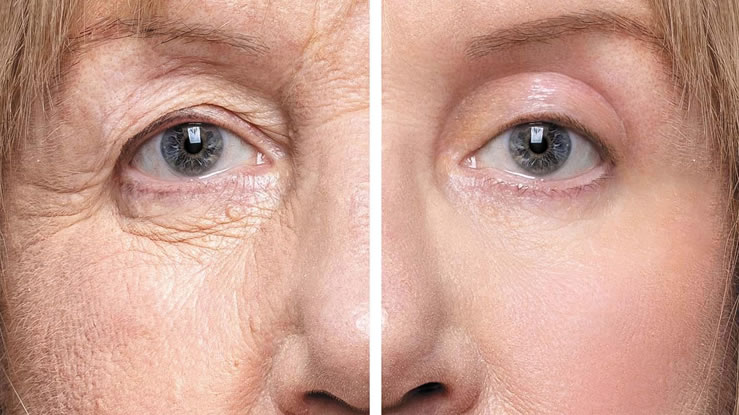Blepharoplasty, also known as eyelid surgery, is a cosmetic or functional procedure aimed at improving the appearance or function of the eyelids. While its visual benefits are widely acknowledged, one of the most common concerns people express is the pain associated with the process. This article provides a comprehensive explanation of how painful eyelid surgery is, from the moment of consultation through recovery.
What Is Eyelid Surgery?
Eyelid surgery is a procedure that involves removing or repositioning skin, muscle, and sometimes fat from the upper or lower eyelids. The surgery may be done for cosmetic reasons, such as to correct drooping upper eyelids or under-eye bags, or for functional reasons, including improving vision obstructed by sagging eyelid skin.
There are three primary types of eyelid surgery:
-
Upper Blepharoplasty: Addresses the upper eyelid by removing excess skin and fat to open up the eye area.
-
Lower Blepharoplasty: Focuses on under-eye bags or sagging by removing or repositioning fat and tightening the skin.
-
Double Eyelid Surgery: Common in East Asia, this creates a visible crease in the upper eyelid for individuals born without one.
Each procedure type comes with its own approach and set of post-operative experiences, including discomfort levels.
Read Also>>>What is facial reconstructive surgery?
Preparing for Eyelid surgery: What to Expect
Prior to the operation, your surgeon will assess your goals, review your medical history, and evaluate whether you are a good candidate for the procedure. Patients often feel anxious about potential pain, but a well-prepared consultation usually provides clarity and reassurance.
During this time, the surgeon will also explain the anesthesia options. Most eyelid surgeries are performed using local anesthesia combined with sedation, which minimizes pain during the procedure. In some cases, general anesthesia may be offered.
Knowing what to expect beforehand can reduce anxiety, which itself can affect how pain is experienced after surgery.
Is Eyelid Surgery Painful During the Procedure?
Eyelid surgery is generally not painful during the actual operation. Most patients are either sedated or fully asleep and do not feel any discomfort while the surgeon works. When local anesthesia is used, it is administered via a small injection into the eyelid area. Some people may feel a pinch or slight pressure during this injection, but the sensation typically lasts only a few seconds.
After the anesthesia has taken effect, the surgery begins. Patients often report not feeling any pain at all during this stage. Some may feel a mild sensation of tugging or movement, but it is not described as painful.
Immediate Post-Surgical Pain: The First 24 to 48 Hours
Once the procedure ends and the anesthesia wears off, patients begin to feel some discomfort. This is when pain, if it occurs, is most likely to be noticed.
Most describe the pain as mild to moderate. Rather than sharp or intense pain, the feeling is usually a sense of tightness, swelling, and pressure in the eyelid area. Some describe a burning sensation or slight stinging, but these feelings tend to decrease with time.
Doctors usually prescribe pain medication or recommend over-the-counter pain relievers to manage this stage. Cold compresses are also commonly advised to reduce swelling and ease discomfort.
In the first 48 hours, keeping the head elevated can also help control swelling, which in turn can reduce pressure and irritation.
The First Week: Discomfort, Not Severe Pain
During the first week after surgery, most patients continue to experience swelling, bruising, and a sensation of heaviness around the eyes. Vision may be temporarily blurry, not because of eye damage, but due to swelling and ointments used for protection.
Although bruising and puffiness may look dramatic, the level of actual pain tends to remain low. Patients are often surprised to find that the discomfort does not interfere heavily with daily tasks, although they may be advised to rest and avoid strenuous activity.
The use of cold compresses is often recommended throughout the first week. Some patients may experience dry eyes or excessive tearing, which can cause mild irritation, but these effects generally diminish as healing progresses.
Stitches, if not dissolvable, are typically removed within five to seven days, a process that may cause brief discomfort but is generally not painful.
The Second Week and Beyond: Significant Reduction in Discomfort
By the second week, most people report that pain has almost entirely disappeared. Swelling and bruising also begin to subside, and the area around the eyes starts to look more natural. Any lingering tightness is usually tolerable and fades over time.
Itching may occur as part of the healing process, particularly around incision sites. Although annoying, this is a normal part of tissue repair. Patients are advised not to scratch or rub the area to avoid complications or scarring.
Any discomfort that remains tends to be described as dull or achy, not sharp or severe. At this point, most individuals no longer require pain medication.
Long Term Recovery and Residual Sensations
While pain is generally limited to the first week or two, some patients report occasional sensations such as numbness or tingling for several weeks afterward. These sensations are not painful but can be unsettling. They usually resolve on their own as nerves in the area regenerate.
Scars from eyelid surgery are typically very fine and continue to fade over time. If discomfort reappears later in recovery, such as a pulling sensation when blinking, it is often due to minor tightness in the skin and is not cause for concern.
Rarely, people may experience complications that lead to persistent discomfort, such as dry eye syndrome or eyelid asymmetry. These cases are uncommon and usually manageable with further care or treatment.
What Influences Pain Perception?
Individual pain thresholds vary widely, and so do healing experiences. Factors that influence how painful eyelid surgery feels include:
-
Overall health: People in good health often heal faster and experience fewer complications.
-
Age: Younger patients tend to recover more quickly, but older adults can still have smooth recoveries.
-
Smoking: Tobacco use can impair healing and increase discomfort.
-
Surgical technique: The skill and approach of the surgeon play a large role in minimizing tissue trauma.
-
Post-operative care: Following care instructions carefully can reduce swelling and prevent infections that would otherwise increase pain.
A qualified, experienced surgeon will provide guidance tailored to your body and medical history, which can make a significant difference in how you experience discomfort.
How Does Eyelid Surgery Pain Compare to Other Cosmetic Procedures?
When compared to procedures like facelifts, tummy tucks, or rhinoplasty, eyelid surgery ranks among the least painful. The affected area is small, and the techniques used are designed to be as gentle as possible.
Pain is most often described as manageable and short-lived. This makes eyelid surgery a popular option for people seeking noticeable results with minimal downtime or discomfort.
Patients often return to work within 7 to 10 days, although complete healing may take several weeks.
When Should You Contact a Doctor About Pain?
While most pain after eyelid surgery is mild and improves steadily, certain signs should prompt you to contact your surgeon:
-
Sudden, intense pain that does not respond to medication
-
Redness or swelling that worsens instead of improving
-
Yellow discharge or signs of infection at the incision site
-
Vision changes, especially double vision or vision loss
-
A sensation of hardness or bulging that does not improve
Prompt attention can prevent complications and ensure that healing proceeds smoothly.
Is Eyelid surgery Worth It?
Many people undergo eyelid surgery to address drooping lids that interfere with vision or create a tired appearance. Because pain is usually minimal and short-term, most people who choose this procedure feel that the benefits far outweigh any discomfort experienced.
Those who are concerned about the pain often find that their fears were exaggerated. Talking with previous patients or reading honest reviews can help prepare you emotionally and mentally for what to expect.
Consultations with board-certified surgeons can also provide personalized insights into how much discomfort you might experience and how best to manage it.

















